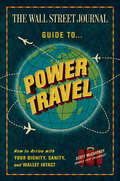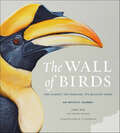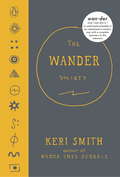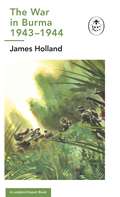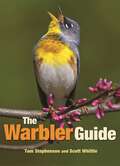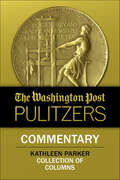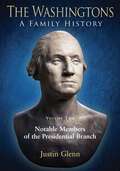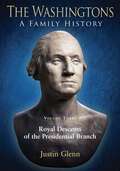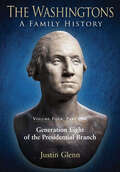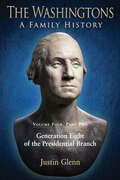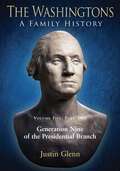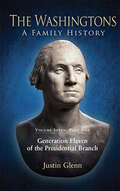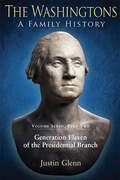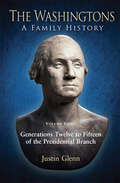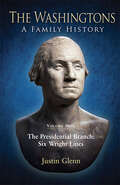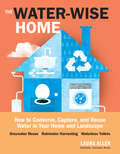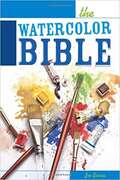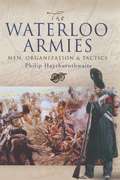- Table View
- List View
The Wall Street Journal Guide to Business Style and Us
by Paul MartinHere at last is the indispensable resource that has helped the writers and editors of The Wall Street Journal earn a reputation for the most authoritative business writing anywhere. Originally written exclusively for the paper's staff, The Wall Street Journal Guide to Business Style and Usage is a landmark work. Many years in preparation, it has now been expanded and revised for anyone who wants to write well, but especially for those in the business community. The only book of its kind, it offers A-Z guidance on style and usage, bearing in mind the special needs of business professionals and including the latest business terminology. If ABC is no longer the American Broadcasting Company, what is it? What is the difference bet-ween "adjusted gross receipts" and "adjusted gross income"? How about the differences among "adopt," "approve," "enact" and "pass"? When should you say "affect" and when "effect"? When did Generation X end and Generation Y begin? And what the heck is the new name of Andersen Consulting? Our language is ever changing, ever mutating, and the choice of the right word bolsters your credibility with readers. As the go-to resource for these questions and others, The Wall Street Journal Guide to Business Style and Usage gives readers a competitive edge for succeeding in the world of business. It is an invaluable resource for any member of the business community who has ever had to write a memo, report, proposal, press release or e-mail. Destined to be the standard resource for years to come, The Wall Street Journal Guide to Business Style and Usage provides readers with access to the Journal Web site (www.wsjbooks.com), which will feature updates as new business terms enter the language or as old definitions or usages give way to new. This guide is the definitive reference work to keep close to your desk -- the last word for everyone who works with words.
The Wall Street Journal Guide to Power Travel: How to Arrive with Your Dignity, Sanity, and Wallet Intact
by Scott McCartneyImagine a world without late planes, missed connections, lost luggage, bumped passengers, cramped seating, high fees and higher fares, surly employees, and security lines. . . .Ordinary travel is an extraordinary ordeal. Yet despite the high prices and huge hassles, travel is essential—along with the need for tips, tricks, and techniques to improve the journey. The Wall Street Journal Guide to Power Travel is an entertaining road trip and a helpful guide, drawn from Scott McCartney's popular Middle Seat column, which explains why bad things happen to good travelers and what you can do to improve your lot. Expert advice and tips include:How to get cheap fares, first-class upgrades, and better seats.How to minimize chances of lost luggage and what to do when baggage doesn't show up.How to avoid delays, get around TSA bottlenecks, and minimize the chances you'll get stuck at some distant airport—and what to do if you do get stuck.How to complain to an airline and get some attention, right down to what to ask for in compensation and how to get the government's attention.
The Wall of Birds: One Planet, 243 Families, 375 Million Years
by Jane Kim Thayer WalkerA celebration of the diversity and evolution of birds, as depicted in the Cornell Lab of Ornithology's magnificent 2,500-square-foot Wall of Birds mural by artist Jane Kim.Part homage, part artistic and sociological journey, The Wall of Birds tells the story of birds' remarkable 375-million-year evolution. With a foreword by John W. Fitzpatrick, director of the Cornell Lab of Ornithology, and full of lush photographs of gorgeous life-size birds painted in exacting detail, The Wall of Birds lets readers explore these amazing creatures family by family and continent by continent. Throughout, beautifully crafted narratives and intimate artistic reflections tell of the evolutionary forces that created birds' dazzling variety of forms and colors, and reveal powerful lessons about birds that are surprisingly relevant to contemporary human challenges.From the tiny five-inch Marvelous Spatuletail hummingbird to the monstrous thirty-foot Yutyrannus, The Wall of Birds is a visual feast, essential for bird enthusiasts, naturalists, and art lovers alike.
The Wander Society
by Keri Smithwan·der verb \ˈwän-dər\ to walk/explore/amble in an unplanned or aimless way with a complete openness to the unknown Several years ago when Keri Smith, bestselling author of Wreck This Journal, discovered cryptic handwritten notations in a worn copy of Walt Whitman's Leaves of Grass, her interest was piqued. Little did she know at the time that those simple markings would become the basis of a years-long, life-changing exploration into a mysterious group known only as The Wander Society, as well as the subject of this book.Within these pages, you'll find the results of Smith's research: A guide to the Wander Society, a secretive group that holds up the act of wandering, or unplanned exploring, as a way of life. You'll learn about the group's mysterious origins, meet fellow wanderers through time, discover how wandering feeds the creative mind, and learn how to best practice the art of wandering, should you choose to accept the mission.From the Hardcover edition.
The War in Burma 1943-1944: (WW2 #10) (The Ladybird Expert Series #16)
by James HollandBOOK 10 OF THE LADYBIRD EXPERT HISTORY OF THE SECOND WORLD WAR, FROM AWARD-WINNING HISTORIAN JAMES HOLLANDFeaturing stunning illustrations from Keith Burns, bringing the story to life in vivid detailWhy were British troops in Burma?What was The Defence of the Admin Box?How did the British defeat the Japanese troops?THE BURMA CAMPAIGN was one of the most prolonged campaigns in the South-East Asian theatre of war, but it was also one of the most dramatic.Against Japanese troops, and monsoon weather, the Allies finally prevailed, demonstrating to the world that the Axis powers could be defeated in the East.BRITAIN'S TURNING POINT IN THE WAR IN THE EASTWritten by historian, author and broadcaster James Holland, The War in Burma is an essential, accessible introduction to Britain's triumph in the East.__________Discover the full Ladybird Expert WW2 series:BlitzkriegThe Battle of BritainBattle of the AtlanticThe Desert WarThe Eastern FrontThe Pacific WarThe Bomber WarThe War in ItalyThe Battle for NormandyThe War in BurmaVictory in EuropeVictory Against Japan
The Warbler Guide
by Scott Whittle Tom StephensonA field guide that revolutionizes warbler identificationWarblers are among the most challenging birds to identify. They exhibit an array of seasonal plumages and have distinctive yet oft-confused calls and songs. The Warbler Guide enables you to quickly identify any of the 56 species of warblers in the United States and Canada. This groundbreaking guide features more than 1,000 stunning color photos, extensive species accounts with multiple viewing angles, and an entirely new system of vocalization analysis that helps you distinguish songs and calls.The Warbler Guide revolutionizes birdwatching, making warbler identification easier than ever before. For more information, please see the author videos on the Princeton University Press website.Covers all 56 species of warblers in the United States and CanadaVisual quick finders help you identify warblers from any angleSong and call finders make identification easy using a few simple questionsUses sonograms to teach a new system of song identification that makes it easier to understand and hear differences between similar speciesDetailed species accounts show multiple views with diagnostic points, direct comparisons of plumage and vocalizations with similar species, and complete aging and sexing descriptionsNew aids to identification include song mnemonics and icons for undertail pattern, color impression, habitat, and behaviorIncludes field exercises, flight shots, general identification strategies, and quizzesA complete, page-by-page audio companion to all of the 1,000-plus songs and calls covered by the book is available for purchase and download from the Cornell Lab of Ornithology's Macaulay Library by using the link at www.TheWarblerGuide.com
The Washington Post Pulitzers: Commentary, Kathleen Parker
by Kathleen ParkerRecipient of the Pulitzer Prize for Commentary. Kathleen Parker, former staff writer for the Orlando Sentinel and author of SAVE THE MALES: WHY MEN MATTER, WHY WOMEN SHOULD CARE, informs and astounds readers with her Pulitzer Prize-winning columns for The Washington Post. No subject too charged or controversial; Parker tackles topics as incendiary as abortion, as charged as race, as current as President Obama, as deceptively whimsical as Twitter. Shaped by wisdom, originality, and good, old-fashioned reporting, Kathleen Parker never fails to leave her readers entertained and enlightened.
The Washingtons. Volume 1: Seven Generations of the Presidential Branch (The Washingtons: A Family History #1)
by Justin GlennThis is the initial volume of a comprehensive history that traces the “Presidential line” of the Washingtons. Volume one begins with the immigrant John Washington who settled in Westmoreland Co., Va., in 1657, married Anne Pope, and was the great-grandfather of President George Washington. This volume continues the story of John and Anne’s family for a total of seven generations, collecting over 5,000 direct descendants. Future volumes will trace eight more generations with a total of over 63,000 descendants. Although structured in a genealogical format for the sake of clarity, this is no bare bones genealogy but a true family history with over 1,200 detailed biographical narratives. These in turn strive to convey the greatness of the family that produced not only The Father of His Country but many others, great and humble, who struggled to build that country. The Washingtons includes the time-honored John Wright line which in recent years has been challenged largely on the basis of DNA evidence. Volumes one and two will form a set, with a cumulative bibliography appearing at the end of volume 2. Volume two will highlight the most notable descendants and spouses from the later volumes, including such luminaries as General George S. Patton, the author Shelby Foote, and the actor Lee Marvin. All of the volumes, now estimated at fourteen in all, are virtually complete and are scheduled for release over the course of the next year.
The Washingtons. Volume 2: Notable Members of the Presidential Branch (The Washingtons: A Family History #2)
by Justin GlennThis is the second volume of a comprehensive history that traces the “Presidential line” of the Washingtons. Volume one began with the immigrant John Washington who settled in Westmoreland Co., Va., in 1657, married Anne Pope, and was the great-grandfather of President George Washington. It continued the record of their descendants for a total of seven generations. Volume two is a collection of notable descendants of the next eight generations of John and Anne Washington’s descendants, including such luminaries as General George S. Patton, the author Shelby Foote, and the actor Lee Marvin. Future volumes will trace generations eight through fifteen, making a total of over 63,000 descendants. Although structured in a genealogical format for the sake of clarity, this is no bare bones genealogy but a true family history with over 1,200 detailed biographical narratives. These in turn strive to convey the greatness of the family that produced not only The Father of His Country but many others, great and humble, who struggled to build that country. The Washingtons includes the time-honored John Wright line which in recent years has been challenged largely on the basis of DNA evidence. Volumes one and two form a set, with a cumulative bibliography appearing at the end of volume two.
The Washingtons. Volume 3: Royal Descents of the Presidential Branch (The Washingtons: A Family History #3)
by Justin GlennThis Royal Descents supplement is an outgrowth of the author’s multi-volume family history of the “Presidential Branch” of the Washingtons. That work collects the descendants of the immigrant John Washington who settled in Westmoreland Co., Va., in 1657, married Anne Pope, and became the great-grandfather of President George Washington. The Royal Descents traces the ancestry of the early Virginia members of this “Presidential Branch” back in time to the aristocracy and nobility of England and continental Europe, including the Plantagenet dynasty, William the Conqueror, Alfred the Great, Charles Martel, and Charlemagne. ADVANCE PRAISE for The Washingtons: A Family History “I am convinced that your work will be of wide interest to historians and academics as well as members of the Washington family itself. Although the surname Washington is perhaps the best known in American history and much has been written about the Washington family for well over a century, it is surprising that no comprehensive family history has been published. Justin M. Glenn’s The Washingtons: A Family History finally fills this void for the branch to which General and President George Washington belonged, identifying some 63,000 descendants. This is truly a family history, not a mere tabulation of names and dates, providing biographical accounts of many of the descendants of John Washington who settled in Westmoreland County, Virginia, in 1657. . . . Each individual section is followed by extensive listings of published and manuscript sources supporting the information presented and errors of identification in previous publications are commented upon as appropriate.” John Frederick Dorman, editor of The Virginia Genealogist (1957-2006) and author of Adventurers of Purse and Person “Decades of reviewing Civil War books have left me surprised and delighted when someone applies exhaustive diligence to a topic not readily accessible. Dr. Glenn surely meets that standard with the meticulous research that unveils the Washington family in gratifying detail—many of them Confederates of interest and importance.” Robert K. Krick, author of The Smoothbore Volley that Doomed the Confederacy and Stonewall Jackson at Cedar Mountain
The Washingtons. Volume 4, Part 1: Generation Eight of the Presidential Branch (The Washingtons: A Family History #4.2)
by Justin GlennThis is the fourth volume of Dr. Justin Glenn’s comprehensive history that traces the “Presidential line” of the Washingtons. Volume One began with the immigrant John Washington, who settled in Westmoreland Co., Va., in 1657, married Anne Pope, and became the great-grandfather of President George Washington. It continued the record of their descendants for a total of seven generations. Volume Two highlighted notable members of the next eight generations of John and Anne Washington’s descendants, including General George S. Patton, author Shelby Foote, and actor Lee Marvin. Volume Three traced the ancestry of the early Virginia members of this “Presidential Branch” back in time to the aristocracy and nobility of England and continental Europe. Volume Four resumes the family history where Volume One ended. It presents Generation Eight of the immigrant John Washington’s descendants, containing nearly 7,000 descendants. Future volumes will trace generations nine through fifteen, making a total of over 63,000 descendants. Although structured in a genealogical format for the sake of clarity, this is no bare bones genealogy but a true family history with over 1,200 detailed biographical narratives. These in turn strive to convey the greatness of the family that produced not only The Father of His Country but many others, great and humble, who struggled to build that country. Volume Four, Part One covers the descendants of the immigrant John Washington’s child Lawrence Washington. Volume Four, Part Two covers the descendants of the Immigrant’s children John Washington, Jr., and Anne (Washington) Wright.
The Washingtons. Volume 4, Part 2: Generation Eight of the Presidential Branch (The Washingtons: A Family History #4.2)
by Justin GlennThis is the fourth volume of Dr. Justin Glenn’s comprehensive history that traces the “Presidential line” of the Washingtons. Volume One began with the immigrant John Washington, who settled in Westmoreland Co., Va., in 1657, married Anne Pope, and became the great-grandfather of President George Washington. It continued the record of their descendants for a total of seven generations. Volume Two highlighted notable members of the next eight generations of John and Anne Washington’s descendants, including General George S. Patton, author Shelby Foote, and actor Lee Marvin. Volume Three traced the ancestry of the early Virginia members of this “Presidential Branch” back in time to the aristocracy and nobility of England and continental Europe. Volume Four resumes the family history where Volume One ended. It presents Generation Eight of the immigrant John Washington’s descendants, containing nearly 7,000 descendants. Future volumes will trace generations nine through fifteen, making a total of over 63,000 descendants. Although structured in a genealogical format for the sake of clarity, this is no bare bones genealogy but a true family history with over 1,200 detailed biographical narratives. These in turn strive to convey the greatness of the family that produced not only The Father of His Country but many others, great and humble, who struggled to build that country. Volume Four, Part One covers the descendants of the immigrant John Washington’s child Lawrence Washington. Volume Four, Part Two covers the descendants of the Immigrant’s children John Washington, Jr., and Anne (Washington) Wright.
The Washingtons. Volume 5, Part 1: Generation Nine of the Presidential Branch (The Washingtons: A Family History #5.1)
by Justin GlennThis is the fifth volume of Dr. Justin Glenn’s comprehensive history that traces the “Presidential line” of the Washingtons. Volume One began with the immigrant John Washington, who settled in Westmoreland Co., Va., in 1657, married Anne Pope, and became the great-grandfather of President George Washington. It continued the record of their descendants for a total of seven generations. Volume Two highlighted notable family members in the next eight generations of John and Anne Washington’s descendants, including such luminaries as General George S. Patton, the author Shelby Foote, and the actor Lee Marvin. Volume Three traced the ancestry of the early Virginia members of this “Presidential Branch” back in time to the aristocracy and nobility of England and continental Europe. Volume Four resumed the family history where Volume One ended, and it contained Generation Eight of the immigrant John Washington’s descendants. Volume Five now presents Generation Nine, including more than 10,000 descendants. Future volumes will trace generations ten through fifteen, making a total of over 63,000 descendants. Although structured in a genealogical format for the sake of clarity, this is no bare bones genealogy but a true family history with over 1,200 detailed biographical narratives. These in turn strive to convey the greatness of the family that produced not only The Father of His Country but many others, great and humble, who struggled to build that country. ADVANCE PRAISE “I am convinced that your work will be of wide interest to historians and academics as well as members of the Washington family itself. Although the surname Washington is perhaps the best known in American history and much has been written about the Washington family for well over a century, it is surprising that no comprehensive family history has been published. Justin M. Glenn’s The Washingtons: A Family History finally fills this void for the branch to which General and President George Washington belonged, identifying some 63,000 descendants. This is truly a family history, not a mere tabulation of names and dates, providing biographical accounts of many of the descendants of John Washington who settled in Westmoreland County, Virginia, in 1657. . . . Each individual section is followed by extensive listings of published and manuscript sources supporting the information presented and errors of identification in previous publications are commented upon as appropriate.” John Frederick Dorman, editor of The Virginia Genealogist (1957-2006) and author of Adventurers of Purse and Person “Decades of reviewing Civil War books have left me surprised and delighted when someone applies exhaustive diligence to a topic not readily accessible. Dr. Glenn surely meets that standard with the meticulous research that unveils the Washington family in gratifying detail—many of them Confederates of interest and importance.” Robert K. Krick, author of The Smoothbore Volley that Doomed the Confederacy and Stonewall Jackson at Cedar Mountain
The Washingtons. Volume 5, Part 2: Generation Nine of the Presidential Branch (The Washingtons: A Family History #5.1)
by Justin GlennThis is the fifth volume of Dr. Justin Glenn’s comprehensive history that traces the “Presidential line” of the Washingtons. Volume One began with the immigrant John Washington, who settled in Westmoreland Co., Va., in 1657, married Anne Pope, and became the great-grandfather of President George Washington. It continued the record of their descendants for a total of seven generations. Volume Two highlighted notable family members in the next eight generations of John and Anne Washington’s descendants, including such luminaries as General George S. Patton, the author Shelby Foote, and the actor Lee Marvin. Volume Three traced the ancestry of the early Virginia members of this “Presidential Branch” back in time to the aristocracy and nobility of England and continental Europe. Volume Four resumed the family history where Volume One ended, and it contained Generation Eight of the immigrant John Washington’s descendants. Volume Five now presents Generation Nine, including more than 10,000 descendants. Future volumes will trace generations ten through fifteen, making a total of over 63,000 descendants. Although structured in a genealogical format for the sake of clarity, this is no bare bones genealogy but a true family history with over 1,200 detailed biographical narratives. These in turn strive to convey the greatness of the family that produced not only The Father of His Country but many others, great and humble, who struggled to build that country. ADVANCE PRAISE “I am convinced that your work will be of wide interest to historians and academics as well as members of the Washington family itself. Although the surname Washington is perhaps the best known in American history and much has been written about the Washington family for well over a century, it is surprising that no comprehensive family history has been published. Justin M. Glenn’s The Washingtons: A Family History finally fills this void for the branch to which General and President George Washington belonged, identifying some 63,000 descendants. This is truly a family history, not a mere tabulation of names and dates, providing biographical accounts of many of the descendants of John Washington who settled in Westmoreland County, Virginia, in 1657. . . . Each individual section is followed by extensive listings of published and manuscript sources supporting the information presented and errors of identification in previous publications are commented upon as appropriate.” John Frederick Dorman, editor of The Virginia Genealogist (1957-2006) and author of Adventurers of Purse and Person “Decades of reviewing Civil War books have left me surprised and delighted when someone applies exhaustive diligence to a topic not readily accessible. Dr. Glenn surely meets that standard with the meticulous research that unveils the Washington family in gratifying detail—many of them Confederates of interest and importance.” Robert K. Krick, author of The Smoothbore Volley that Doomed the Confederacy and Stonewall Jackson at Cedar Mountain
The Washingtons. Volume 6, Part 1: Generation Ten of the Presidential Branch (The Washingtons: A Family History #6.1)
by Justin GlennThis is the sixth volume of Dr. Justin Glenn’s comprehensive history that traces the “Presidential line” of the Washingtons. Volume One began with the immigrant John Washington, who settled in Westmoreland Co., Va., in 1657, married Anne Pope, and became the great-grandfather of President George Washington. It continued the record of their descendants for a total of seven generations. Volume Two highlighted notable family members in the next eight generations of John and Anne Washington’s descendants. Volume Three traced the ancestry of the early Virginia members of this “Presidential Branch” back to the aristocracy and nobility of England and continental Europe. Volume Four resumed the family history where Volume One ended, and it contained Generation Eight of the immigrant John Washington’s descendants. Volume Five treated Generation Nine. Volume Six now presents Generation Ten, and it includes over 12,000 descendants. Future volumes will add generations eleven through fifteen, making a total of over 63,000 descendants. Although structured in a genealogical format for the sake of clarity, this is no bare bones genealogy but a true family history with over 1,200 detailed biographical narratives. These in turn strive to convey the greatness of the family that produced not only The Father of His Country but many others, great and humble, who struggled to build that country. Volume Six, Part One covers the descendants of the Immigrant John Washington’s children Lawrence Washington and John Washington, Jr. Volume Six, Part Two covers the descendants of the Immigrant’s child Anne (Washington) Wright.
The Washingtons. Volume 6, Part 2: Generation Ten of the Presidential Branch (The Washingtons: A Family History #6.1)
by Justin GlennThis is the sixth volume of Dr. Justin Glenn’s comprehensive history that traces the “Presidential line” of the Washingtons. Volume One began with the immigrant John Washington, who settled in Westmoreland Co., Va., in 1657, married Anne Pope, and became the great-grandfather of President George Washington. It continued the record of their descendants for a total of seven generations. Volume Two highlighted notable family members in the next eight generations of John and Anne Washington’s descendants. Volume Three traced the ancestry of the early Virginia members of this “Presidential Branch” back in time to the aristocracy and nobility of England and continental Europe. Volume Four resumed the family history where Volume One ended, and it contained Generation Eight of the immigrant John Washington’s descendants. Volume Five treated Generation Nine. Volume Six now presents Generation Ten, and it includes over 12,000 descendants. Future volumes will add generations eleven through fifteen, making a total of over 63,000 descendants. Although structured in a genealogical format for the sake of clarity, this is no bare bones genealogy but a true family history with over 1,200 detailed biographical narratives. These in turn strive to convey the greatness of the family that produced not only The Father of His Country but many others, great and humble, who struggled to build that country. ADVANCE PRAISE “I am convinced that your work will be of wide interest to historians and academics as well as members of the Washington family itself. Although the surname Washington is perhaps the best known in American history and much has been written about the Washington family for well over a century, it is surprising that no comprehensive family history has been published. Justin M. Glenn’s The Washingtons: A Family History finally fills this void for the branch to which General and President George Washington belonged, identifying some 63,000 descendants. This is truly a family history, not a mere tabulation of names and dates, providing biographical accounts of many of the descendants of John Washington who settled in Westmoreland County, Virginia, in 1657. . . . Each individual section is followed by extensive listings of published and manuscript sources supporting the information presented and errors of identification in previous publications are commented upon as appropriate.” John Frederick Dorman, editor of The Virginia Genealogist (1957-2006) and author of Adventurers of Purse and Person “Decades of reviewing Civil War books have left me surprised and delighted when someone applies exhaustive diligence to a topic not readily accessible. Dr. Glenn surely meets that standard with the meticulous research that unveils the Washington family in gratifying detail—many of them Confederates of interest and importance.” Robert K. Krick, author of The Smoothbore Volley that Doomed the Confederacy and Stonewall Jackson at Cedar Mountain
The Washingtons. Volume 7, Part 1: Generation Eleven of the Presidential Branch (The Washingtons: A Family History #7.1)
by Justin GlennThis is the seventh volume of Dr. Justin Glenn’s comprehensive history that traces the “Presidential line” of the Washingtons. Volume one began with the immigrant John Washington, who settled in Westmoreland Co., Va., in 1657, married Anne Pope, and became the great-grandfather of President George Washington. It continued the record of their descendants for a total of seven generations. Volume two highlighted notable members of the next eight generations, including such luminaries as General George S. Patton, the author Shelby Foote, and the actor Lee Marvin. Volume three traced the ancestry of the early Virginia members of this “Presidential Branch” back to the royalty and nobility of England and continental Europe. Volumes four, five, and six treated respectively generations eight, nine, and ten. Volume Seven presents generation eleven, comprising more than 10,000 descendants of the immigrant John Washington. Although structured in a genealogical format for the sake of clarity, this is no bare bones genealogy but a true family history with over 1,200 detailed biographical narratives. These strive to convey the greatness of the family that produced not only The Father of His Country but many others, great and humble, who struggled to build that country. Volume Seven, Part One covers the descendants of the immigrant’s children Lawrence and John Washington, Jr. Volume Seven, Part Two covers the descendants of the immigrant’s child Anne (Washington) Wright.
The Washingtons. Volume 7, Part 2: Generation Eleven of the Presidential Branch (The Washingtons: A Family History #7.2)
by Justin GlennThis is the seventh volume of Dr. Justin Glenn’s comprehensive history that traces the “Presidential line” of the Washingtons. Volume one began with the immigrant John Washington, who settled in Westmoreland Co., Va., in 1657, married Anne Pope, and became the great-grandfather of President George Washington. It continued the record of their descendants for a total of seven generations. Volume two highlighted notable members of the next eight generations, including such luminaries as General George S. Patton, the author Shelby Foote, and the actor Lee Marvin. Volume three traced the ancestry of the early Virginia members of this “Presidential Branch” back to the royalty and nobility of England and continental Europe. Volumes four, five, and six treated respectively generations eight, nine, and ten. Volume Seven presents generation eleven, comprising more than 10,000 descendants of the immigrant John Washington. Although structured in a genealogical format for the sake of clarity, this is no bare bones genealogy but a true family history with over 1,200 detailed biographical narratives. These strive to convey the greatness of the family that produced not only The Father of His Country but many others, great and humble, who struggled to build that country. Volume Seven, Part One covers the descendants of the immigrant’s children Lawrence and John Washington, Jr. Volume Seven, Part Two covers the descendants of the immigrant’s child Anne (Washington) Wright.
The Washingtons. Volume 8: Generations Twelve to Fifteen of the Presidential Branch (The Washingtons: A Family History)
by Justin GlennThis is the eighth volume of Dr. Justin Glenn’s comprehensive history that traces the “Presidential line” of the Washingtons. Volume one began with the immigrant John Washington, who settled in Westmoreland Co., Va., in 1657, married Anne Pope, and became the great-grandfather of President George Washington. It continued the record of their descendants for a total of seven generations. Volume two highlighted notable members of the next eight generations, including such luminaries as General George S. Patton, the author Shelby Foote, and the actor Lee Marvin. Volume three traced the ancestry of the early Virginia members of this “Presidential Branch” back to the royalty and nobility of England and continental Europe. Volumes four, five, six, and seven treated respectively generations eight, nine, ten, and eleven. Volume Eight presents generations twelve through fifteen, comprising more than 8,500 descendants of the immigrant John Washington. Although structured in a genealogical format for the sake of clarity, this is no bare bones genealogy but a true family history with over 1,200 detailed biographical narratives. These strive to convey the greatness of the family that produced not only The Father of His Country but many others, great and humble, who struggled to build that country.
The Washingtons. Volume 9: The Presidential Branch: Six Wright Lines (The Washingtons: A Family History #9)
by Justin GlennThis is the ninth volume of a comprehensive history that traces the “Presidential Line” of the Washingtons. Volume one began with the immigrant John Washington who settled in Westmoreland Co., Va., in 1657, married Anne Pope, and was the great-grandfather of President George Washington. It contained the record of their descendants for a total of seven generations. Subsequent volumes two through eight continued this family history for an additional eight generations, highlighting most notable members (volume two) and tracing lines of descent from the royalty and nobility of England and continental Europe (volume three). Volume nine collects over 8,500 descendants of the recently discovered line of William Wright (died in Franklin Co., Va., ca. 1809). It also provides briefer accounts of five other early Wright families of Virginia that have often been mentioned by researchers as close kinsmen of George Washington, including: William Wright (died in Fauquier Co., Va., ca. 1805), Frances Wright and her husband Nimrod Ashby, and William Wright (died in Greensville Co., Va., by 1827). A cumulative index will complete the series as volume ten.
The Water Gardening Idea Book: How to Build, Plant, and Maintain Ponds, Fountains, and Basins
by Peter BissetLearn how to transform an ordinary backyard garden into a true showpiece. Originally published in 1924, Peter Bisset shares with readers timeless advice and tips for creating a variety of water gardens. After experiencing one, it's easy to see why these gardens hold such appeal; these splashing fountains and ponds make hot days seem cooler, and they also attract birds and butterflies to your backyard. Even tiny tabletop fountains offer soothing sounds to drown out a busy street or a noisy neighbor.The Water Gardening Idea Book gives in full detail all the practical information necessary for the selection, grouping, and successful cultivation of aquatic and other plants required in the making of a water garden and its surroundings. It's perfect for both amateurs and those with green thumbs looking to take their gardens to the next level. Readers will enjoy projects of varying difficulty, starting with simple container gardens to the large estate or park fountains and ponds. Whether you're interested in creating a casual pond or a formal fountain, with The Water Gardening Idea Book you'll be able to create them with confidence.
The Water-Wise Home: How to Conserve, Capture, and Reuse Water in Your Home and Landscape
by Laura AllenSave the earth’s most precious resource while also saving yourself money. Laura Allen provides expert strategies for using water smartly and efficiently while fulfilling all of your home and garden needs. Learn how to create a water-wise landscape, reuse greywater, harvest rainwater, and even set up a waterless composting toilet. Offering proven techniques in clear and accessible language, The Water-Wise Home makes it easy to help the environment and lower your household operating costs through conserving water.
The Watercolor Bible
by Joe GarciaThis handy guide is a must-have addition to every artist's toolkit. Small enough to take anywhere, The Watercolor Bible offers indispensable advice for nearly every aspect of watercolor painting. It's jam-packed with useful information, featuring: <p> -Inspiring artwork and friendly instruction, including the basics on composition, color, and finding ideas <p> -A comprehensive section on materials and supplies—everything from paint, brushes, and paper to gouache and masking fluid <p> -More than 15 step-by-step demonstrations on such popular subjects as water, flowers, trees, animals, and landscapes <p> -An in-depth look at the drawing and painting techniques every artist should know <p> -Wire binding that makes it easy to flip open and reference during a painting
The Waterloo Archive Volume I: Volume 1: British Sources (The Waterloo Archive #1)
by His Grace the Duke of WellingtonOriginally published in 1900, this book features excerpts from Alexander Cavali Mercer's account of the battle of Waterloo. As an artillery officer at the sharp end, this is his eye-witness account of the events that lead to Napoleon's final defeat in June 1815. This is the contemporary view of how the events were conveyed to the public of Great Britain. Featuring original engravings from the Illustrated London News and the Graphic, and many paintings from the era, this book was written during the height of the British Empire, and the triumphalist mood of the day is reflected in the tone of the text. This detailed military history provides an echo of the contemporary attitudes to this turbulent time which shaped the destiny of the British Empire. This book is part of the 'Military History From Primary Sources' series, a new military history range compiled and edited by Emmy Award winning author and historian Bob Carruthers. The series draws on primary sources and contemporary documents to provide a new insight into the true nature of warfare. The series consultant is David Mcwhinnie, creator of the award winning PBS series 'Battlefield'.
The Waterloo Armies: Men, Organization & Tactics
by Philip HaythornthwaiteGerman troops formed the majority of Wellingtons forces present at the Battle of Waterloo including those of Nassau, Brunswick, Hanover and the Kings German Legion, and they have left a large number of first-hand accounts of their role in the battle.The actions of the King's German Legion an integral part of the British Army and partly officered by British soldiers has been published in English, but to a limited degree: Herbert Siborne published letters written to his father; Ompteda and Wheatley have had their memoirs published; and History of the Kings German Legion included a small number of letters, including the oft-misquoted account of the defence of La Haye Sainte by Major Baring. This forms a tiny proportion of the German material available. Therefore it is not surprising that early British histories of the battle have largely sidelined the achievements of the German troops, and this has been regurgitated by most that have followed. This situation did not change until the 1990s when Peter Hofschroer published his two-volume version of the campaign from the German perspective, which included snippets of German documents published in English for the first time. But even this proved not totally satisfactory, as it did not provide the whole document to allow full interpretation. There is a great need to provide an English version of much of the original German source material to redress the imbalance; this volume is intended to remedy that situation by publishing sixty of these reports and letters fully translated into English for the first time, giving a clearer insight into the significant role these troops played. Gareth Glover is a historian specialising in the Waterloo campaign and the Peninsular War. He left school at eighteen to join the Royal Navy as a Seaman Officer and completed his extensive training course at Dartmouth College. He has published articles in The Waterloo Journal and the Journal of the Royal Artillery, and a novel about Waterloo, Voices of Thunder.Christmas Selection 2010, Napoleon.org website

